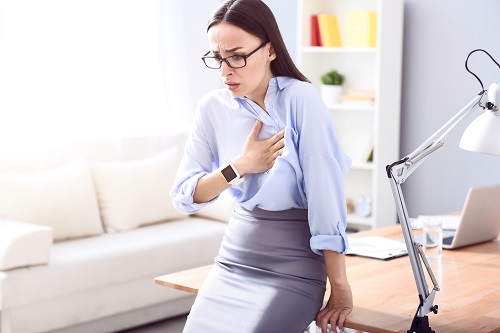Heart Health

February is traditionally associated with Valentine’s Day and it is also designated American Heart Month. This is a subject that has become near and dear to me because in the last two years I have had two very close friends suffer from serious heart issues. One of these friends had a strong family history of heart disease and the other friend did not.
Cardiovascular diseases continue to be the number one killer of women, accounting for one in three deaths each year. Just for the sake of comparison, 1 in 39 women die of breast cancer annually. Now I am not citing this statistic to diminish the impact of beast cancer in women’s lives. On the contrary.
The big difference, from my perspective as a doctor, is that I see women as being much more vigilant and attentive about their breast health. They seek regular screening and actively talk to their doctors about their concerns. If diagnosed, they usually seek immediate treatment, which has become increasingly effective.
However, women are often ignorant of the signs of heart disease or dismissive of their symptoms. Let’s start with BLOOD PRESSURE, which is both the first method of screening for cardiovascular disease and the first indication of cardiovascular disease. When taken in the doctor’s office, a higher blood pressure may be waved away as “white coat syndrome” and not investigated any further.
Traditionally 120/80 is considered the ideal blood pressure for all adults. A study at Cedars-Sinai Medical Center suggests 110 is a better upper limit for systolic blood pressure (that is the top number) in women. (1) That means that the threshold for women needing treatment for their blood pressure is lower than it is in men.
Another method for screening patients for heart disease is by regularly monitoring CHOLESTEROL LEVELS AND BLOOD GLUCOSE LEVELS through blood chemistry tests. These tests should be done after fasting for 10 to 12 hours.
The third most common method for screening potential heart disease risk is LIFESTYLE FACTORS, such as smoking, diet, alcohol consumption, body mass index (BMI), and exercise status. (2) I would add heredity to this list and history of heart disease in either parent or any of your four grandparents may be included.
SYMPTOMS are the usual indicator for more aggressive screening tests for coronary heart disease and these are not routinely recommended. So let’s look at the symptoms of an actual heart attack in a woman, which can happen even without any hint coming from basic screenings. Keep in mind that physical symptoms can emerge several weeks in varying intensity before the onset of a heart attack. (3)
WARNING SIGNS of a heart attack include:
- Chest pain that is frequently described as tightness, a squeezing sensation, achiness, or pressure.
- Other upper body pain in the upper back, shoulders, arms, neck and jaw, or stomach.
- Fatigue, lightheadedness, and shortness of breath during normal activities such as walking (especially on an incline or going up stairs) or lifting.
- Stomach complaints such as nausea, vomiting, indigestion or profound heartburn.
Severe heartburn was the symptom that caused my friend to walk (!) to the emergency room in her neighborhood for evaluation. The next thing she knew she was being wheeled up from the emergency room to the hospital’s cardiac care unit. Because of quick intervention, she experienced only minimal damage from her mild heart attack.
This is a great video dramatizing a woman experiencing the symptoms of a heart attack. It may seem strangely familiar. The point is, do not ignore a constellation of intense new symptoms you are feeling. Get yourself evaluated as soon as possible, even if you think “it may be nothing.”
- https://www.sciencedaily.com/releases/2021/02/210216115018.htm
- https://www.cardio.com/blog/when-should-you-have-a-heart-health-checkup
- https://www.medicalnewstoday.com/articles/321528#heart-attack-post-menopause


